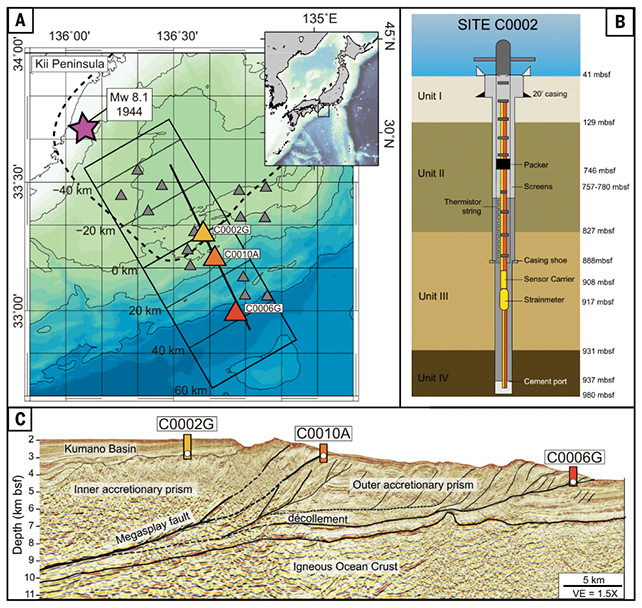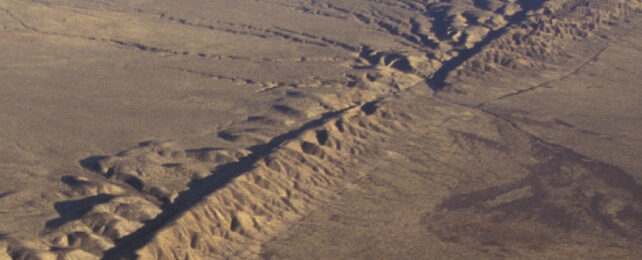Slow-motion earthquakes, as you might guess from the name, involve the release of pent-up geological energy over the course of days or weeks rather than minutes – and scientists have now recorded some as they were happening.
These quakes, also known as slow slip earthquakes or just slow earthquakes, are typically too gentle to cause immediate danger. However, they can help scientists predict full-speed earthquakes or tsunamis, which can of course be far more dangerous.
A team led by researchers from the University of Texas Institute for Geophysics (UTIG) tracked two separate slow slip events (SSEs) in real time – one in 2015 and another in 2020.
Special borehole sensors were positioned deep underwater, close to the Nankai Trough subduction zone off the coast of Japan. There, the Philippine Sea plate is pushing under the Eurasian plate. The researchers describe the activity of the slow quakes as being like a tectonic shock absorber.
"It's like a ripple moving across the plate interface," says hydrogeophysicist Josh Edgington, from UTIG.
Related: Earthquakes Today Could Be Echoes of Powerful Quakes Centuries Ago
The measurements confirm what scientists had previously thought about these slow-motion earthquakes, which were only recently discovered: that they can be significant in releasing (or building) stress around a fault line.

This subduction zone is part of the Pacific Ring of Fire, an extensive collection of volcanoes and faults surrounding the Pacific Ocean. It's responsible for many of the largest earthquakes and tsunamis on record.
And the findings here, about the shock absorber effect, will be crucial in understanding when and where future earthquakes could hit. Other faults lack this kind of tectonic protection, including Cascadia off the western coast of North America.
"This is a place that we know has hosted magnitude 9 earthquakes and can spawn deadly tsunamis," says geophysicist Demian Saffer, from UTIG. "Are there creaks and groans that indicate the release of accumulated strain, or is the fault near the trench deadly silent?"
"Cascadia is a clear top-priority area for the kind of high-precision monitoring approach that we've demonstrated is so valuable at Nankai."
It's only possible to measure these SSEs because of advances in sensor technology, meaning shakes of much lower strength – sometimes only shifting the ground a few millimeters at a time – can be detected.

Through their analysis, the researchers were able to determine that slow earthquakes may be related to high geologic fluid pressures, and that the upper part of the fault can release pressure independently of the rest of it.
All of this helps to inform models predicting earthquakes and tsunamis – with the potential to save thousands of lives. The last major Nankai Trough quake happened in 1946, with the loss of tens of thousands of properties and causing more than 1,300 deaths.
Predicting earthquakes isn't an exact science, with a host of variables involved, but it's something we're getting better at. With each study and technological upgrade, seismologists are improving their models, and adding in data from slow earthquake activity could help greatly.
"The patterns of strain accumulation and release along the offshore reaches of subduction megathrusts are particularly important toward understanding hazards associated with shallow coseismic slip and tsunamigenesis," write the researchers in their published paper.
The research has been published in Science.
